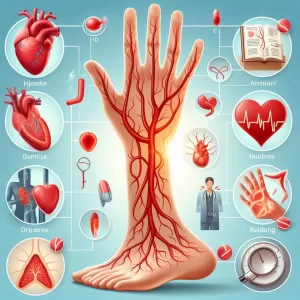Qu'est-ce que la condylectomie pour le dysfonctionnement de l'articulation temporo-mandibulaire : aperçu, avantages et résultats attendus
Définition et aperçu
Condylectomy is one of the medical procedures used to treat temporomandibular joint (TMJ) disorders or simply TMD. It is a surgical procedure used in cases that involve an organic disease of the said joint. It works by totally removing the condyle.
The TMJ is a condylar joint and is the main joint of the jaw. It connects the mandible and the temporal bone, hence its name. It is made up of mandibular condyles, the articular surface of the temporal bone, an articular disc, a lateral pterygoid, a capsule, and ligaments. The TMJ’s main function is to allow jaw movement. As such, it plays a key role in eating and speaking.
When any of the structures of the TMJ gets displaced or gets damaged for any reason, TMJ disorders develop. Such disorders can be dealt with surgical procedures such as condylectomy.
Qui devrait subir et résultats attendus
Condylectomy is beneficial for patients who suffer from temporomandibular joint disorders. Ceux-ci inclus:
- Degenerative joint disease (DJD), or diseases that are characterised by inflamed joints and tissues surrounding the jaw
- Internal derangement, such as disc displacement with reduction
- Displaced condyle fractures, or when the condyle bone becomes fractured
- Recurrent luxations, or recurrent dislocations
- Ankylosis, or the abnormal immobility of a joint resulting from fibrosis or bone union; it can be caused by disease, injury, or surgery.
- Temporal arteritis, or inflammation of the blood vessels that supply blood to the temporal area (head and neck)
- Myofascial pain disorder, a painful condition of the TMJ caused by muscle tension and spasms
However, condylectomy is more effective in patients who suffer from organic TMJ disorders or those that are stress-related. These disorders typically cause symptoms such as:
- Clicking or popping noise when the patient chews or moves his jaws
- Douleur musculaire around the jaw
- Pain around the ear that spreads to the cheeks and temples
- Mal de tête or migraine
- Tight or stuck jaw
- Difficulty opening the mouth
- Mal d'oreille
- Blocked sensation in the jaw
- Pain in the neck
- Backache
- Sleep disturbances
- Facial asymmetry
TMJ disorders can be caused or aggravated by:
- Stress
- Wear and tear of the jaw joint
- Craniofacial trauma
- Chronique otites
- Uneven bite, usually caused by a new denture, dental crown, or filling
- Bruxism, a condition that causes a person to clench his jaw or grind his teeth during sleep
- Underlying medical conditions, such as osteoarthritis, rheumatoid arthritis, goutte, or fibromyalgia
TMJ disorders can be treated without surgery. Patients who experience TMD symptoms are advised to make some lifestyle changes, such as resting the joint, shifting to a soft diet, doing gentle jaw exercises, massaging the muscles around the jaw, and avoiding clenching the jaw or grinding the teeth. Some patients are also given medications or steroid injections. However, some patients eventually require surgery if the disorders do not respond to treatment or if their conditions do not improve.
In a study performed on 17 patients who underwent condylectomy, 14 of them experienced relief from symptoms. The procedure successfully removed any limitations in their jaw motion, allowing them to move their jaw freely afterwards.
Comment se déroule la procédure ?
Condylectomy, which can be either low or high, works by removing the condyle completely. A high condylectomy is a modified version of the procedure where the bone of the condyle head is simply re-contoured to remove the diseased or damaged part. This is effective in removing any bone irregularities or impingement in the temporomandibular joint. The procedure is commonly performed on the lateral part of the joint.
The procedure usually takes 60 to 90 minutes. After the surgery, the patient is usually advised to stay in the hospital for 24 hours.
Condylectomy is sometimes combined with other procedures, such as a caudal mandibulectomy. This is most effective on patients who have periarticular neoplasia or ankylosis. It can also be performed in conjunction with orthognatic surgery. Condylectomies are also usually followed by a reconstruction procedure.
Risques et complications possibles
The complication rate of condylectomy procedures for the treatment of TMJ disorders is very low. Most patients undergo the procedure without any complication. In a study involving 14 patients, none of them had any pain during the follow-up visit.
Condylectomy is considered a safe procedure. The potential complications are quite few and are mostly related to the temporal branch of the facial nerve. Ceux-ci inclus:
- Scarring, which is usually insignificant and does not cause major aesthetic problems for most patients
- TMJ noises, which occurred in 3 patients (or 21.4% of the participants in the study)
- Compromised facial nerve function
- Facial nerve injury
- Limited jaw movement
Decrease in the vertical dimension of the surgical site, resulting in an open bite
Les références:Nelson CL, Hutton CE. “Condylectomy for temporomandibular joint dysfunction. A survey of seventeen postoperative patients.” Oral Surg Oral Med Oral Pathol. 1981 Apr; 51(4): 351-4. https://www.ncbi.nlm.nih.gov/pubmed/6940070
Olate S, Martinez F, Uribe F, Pozzer L, Cavalieri-Pereira L, de Moraes M. “TMJ function after partial condylectomy in active mandibular condylar hyperplasia.” Int J Clin Exp Med. 2014; 7(3): 775-779. https://www.ncbi.nlm.nih.gov/pmc/articles/PMC3992422/
/trp_language]
**What is Condylectomy for Temporomandibular Joint Dysfunction: Overview, Benefits, and Expected Results**
**Overview**
Temporomandibular joint (TMJ) dysfunction is a condition that affects the joint connecting the jaw to the skull. It can cause pain, clicking, popping, and locking of the jaw.
Condylectomy is a surgical procedure that removes the condyle, the rounded end of the lower jawbone. It is performed to relieve pain and improve function in people with severe TMJ dysfunction.
**Benefits**
Condylectomy can offer several benefits, including:
* **Pain relief:** The surgery can significantly reduce pain in the jaw, head, and neck.
* **Improved function:** It can restore normal jaw movement and function, making it easier to eat, speak, and yawn.
* **Reduced TMJ dysfunction symptoms:** The procedure can alleviate clicking, popping, and locking of the jaw.
**Expected Results**
The expected results of condylectomy vary depending on the individual patient. However, most people experience significant improvement in their symptoms.
* **Pain relief:** Most patients report substantial pain reduction after surgery.
* **Jaw mobility:** The surgery typically improves jaw movement and function, allowing patients to chew, speak, and move their jaw with less discomfort.
* **Return to normal activities:** Patients can usually return to their normal activities within a few weeks of surgery.
**Risks and Complications**
Like any surgical procedure, condylectomy carries certain risks and complications, including:
* **Infection**
* **Bleeding**
* **Nerve damage**
* **Facial paralysis**
* **Scarring**
**Recovery and Rehabilitation**
Recovery from condylectomy typically involves:
* **Postoperative pain management:** Pain medication will be prescribed to control discomfort.
* **Jaw exercises:** Gentle exercises will be prescribed to gradually restore jaw movement.
* **Physical therapy:** A physical therapist can help improve jaw function and prevent complications.
**Conclusion**
Condylectomy is an effective surgical option for people with severe TMJ dysfunction. It can provide significant pain relief, improve jaw function, and alleviate associated symptoms. However, it is essential to understand the potential risks and complications before undergoing the procedure.
2 commentaires
Laisser un commentaire
Articles populaires








# Condylectomy for Temporomandibular Joint: Overview, Benefits, and Expected Results
# Condylectomy for Temporomandibular Joint Dysfunction: Overview, Benefits, and Projected Results